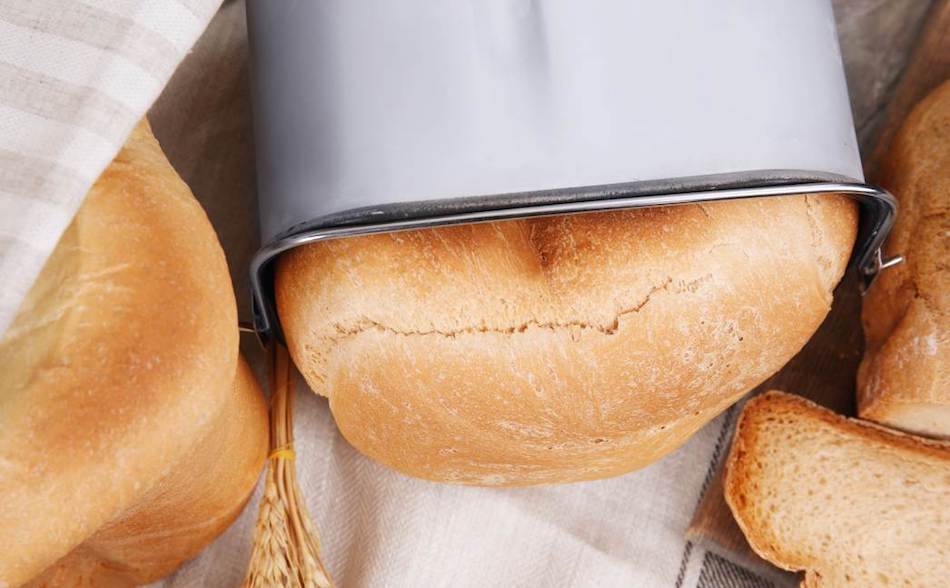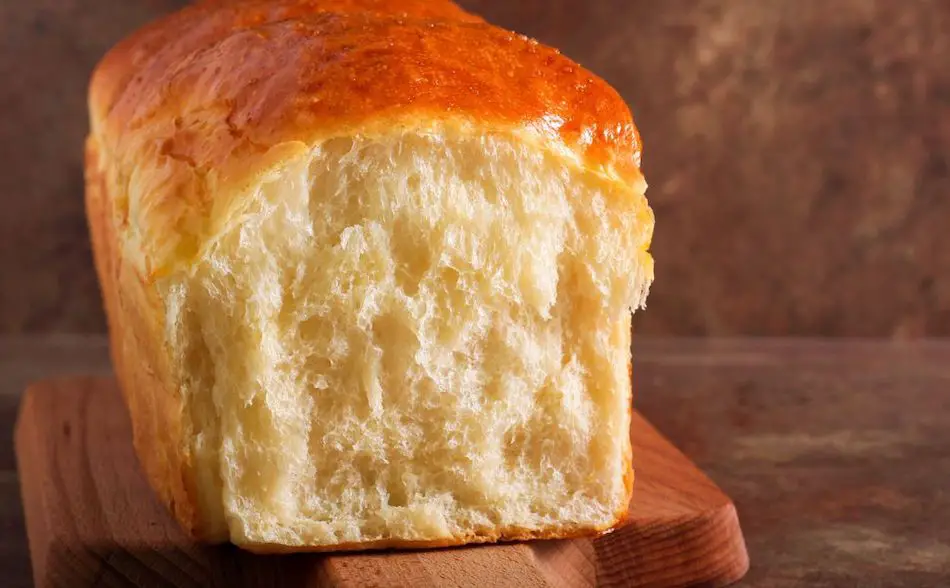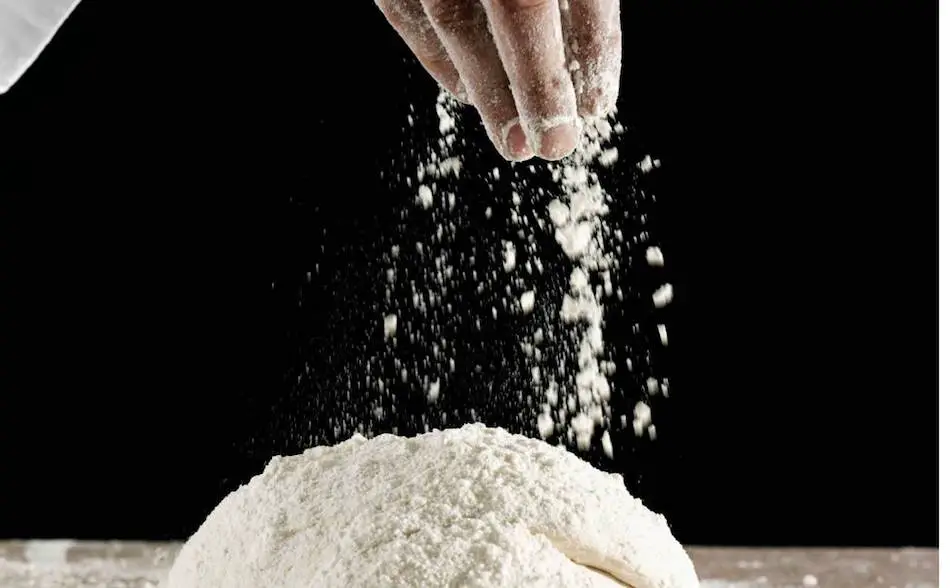
If you’ve ever used a bread machine to make homemade bread, you know how disappointing it can be to end up with a dense, heavy loaf. In this article, we’ll give you expert tips and advice on how to make your bread machine bread light and fluffy every time.
Dense bread machine bread can be caused by a variety of factors, including too much flour, too little liquid, expired or insufficient yeast, over-proofing the dough, or using incorrect bread machine settings. To combat these issues, it’s important to measure ingredients accurately and adjust the flour-to-liquid ratio as needed. Using fresh, active yeast and kneading the dough properly can also help. Additionally, setting the bread machine to the correct cycle and baking time can make a big difference.
Causes and Solutions
| Cause | Solution |
|---|---|
| Too much flour | Reduce the amount of flour or increase the amount of liquid in the recipe |
| Too little liquid | Increase the amount of liquid in the recipe to achieve the right consistency |
| Expired or insufficient yeast | Use fresh, active yeast and follow proper storage guidelines |
| Over-proofed dough | Reduce the proofing time or adjust the recipe to use less yeast |
| Incorrect bread machine settings | Adjust the settings for the specific recipe or bread type |
| Improper kneading | Follow the recipe instructions for proper kneading technique and duration |
| Using the wrong type of flour | Use the recommended type of flour for the recipe or try a flour with a higher protein content |
| Oven too cold | Ensure that your oven is preheated to the correct temperature and consider using a baking stone for better heat distribution |
Why does my bread machine bread come out like a brick?
There’s nothing more frustrating than pulling a loaf of bread machine bread out of the oven, only to find that it’s as heavy as a brick. So, what’s the deal? Well, there are a few common reasons why your bread machine bread may be too dense. First off, you might be using too much flour, or not enough liquid. Alternatively, your yeast may have expired or be insufficient for the recipe.
Another issue could be over-proofing your dough or using the wrong bread machine settings. And let’s not forget about the importance of proper kneading and using the right type of flour. So, if you’re looking to achieve light and fluffy bread machine bread, it’s all about getting the right ingredients, technique, and settings in place.
How can I fix my bread machine bread from being too dense?
Here are a few tricks to help you fix your dense loaf and achieve that perfect texture:
- First up, make sure you’re using the right amount of flour and liquid – too much flour or not enough liquid can make your dough heavy and dense.
- Try using fresh, active yeast, and adjust your proofing time to prevent over-proofing.
- Don’t forget to double-check your bread machine settings to make sure they’re appropriate for the recipe.
- Proper kneading technique is also key, so follow the recipe instructions closely.
- Using the right type of flour can make all the difference – try a flour with a higher protein content for a lighter texture.
How can I make my bread machine bread lighter and fluffier?
If you want to get that perfect, light and fluffy bread machine bread. First off, it’s all about using the right ingredients – be sure to measure your flour and liquids accurately, and use fresh, active yeast. You’ll also want to knead the dough properly to develop those all-important gluten strands that give bread its airy texture.
Another trick is to adjust the liquid-to-flour ratio in your recipe – too much flour can result in a dense loaf. And don’t forget about proofing time and temperature – a warm, humid environment can help your dough rise properly. Finally, try using a bread flour with a higher protein content for a lighter texture.

Is it possible to salvage bread machine bread that is too dense?
Even if you’ve ended up with a dense loaf of bread machine bread, all is not lost. Here are a few tricks to help you salvage that bread and achieve a more desirable texture.
Firstly, try slicing the bread and toasting it – this can help give it a bit of crunch and bring out the flavor. Alternatively, you can use the bread to make croutons or breadcrumbs. If you’re determined to salvage the loaf itself, try reheating it in the oven at a low temperature, or even steaming it to add moisture back into the bread.
Finally, consider using the bread for a bread pudding or savory bread casserole – it may not be perfect for a sandwich, but it can still be delicious in other ways.
What ingredients can I add to my bread machine bread to make it less dense?
If you’re looking to lighten up your bread machine bread, there are a few ingredients you can try adding to the mix. First off, consider adding a bit of milk instead of water – the fat content in milk can help create a softer, lighter texture.
You can also try adding a tablespoon or two of vital wheat gluten to your flour – this can help boost the gluten content and create a fluffier texture. Another option is to add a bit of honey or sugar to your dough – the yeast will feed on the sugar and produce carbon dioxide, which helps the bread rise.
Finally, don’t forget about the impact of fats – adding a bit of oil or butter to your dough can help keep it moist and tender.

How do I adjust the settings on my bread machine to avoid dense bread?
Adjusting the settings on your bread machine can be key to achieving light and fluffy bread. Here are a few tips to help you get the most out of your machine and avoid dense bread. First off, make sure you’re using the right cycle for the type of bread you’re making – some machines have specific settings for whole wheat, gluten-free, or artisan breads, for example. It’s also important to follow the recipe instructions carefully, especially when it comes to ingredient quantities and mixing times.
Additionally, consider using the rapid or quick cycle if your machine has one – this can help prevent over-proofing and produce a lighter loaf. Finally, try adjusting the crust color setting – a darker crust can sometimes lead to a denser bread, so experiment with a lighter color to see if it makes a difference.
What is the ideal amount of yeast to use in bread machine bread?
Ah, yeast – the magical ingredient that makes bread rise. When it comes to the ideal amount of yeast to use in your bread machine bread, it’s important to strike a balance. Too little yeast and your bread won’t rise properly, while too much can result in an overly yeasty flavor or even cause the bread to collapse.
As a general rule of thumb, you’ll want to use about 1 to 2 teaspoons of yeast per 3 cups of flour. However, this can vary depending on the recipe and the type of yeast you’re using – active dry yeast and instant yeast have different requirements, for example.
Follow the recipe instructions closely, and don’t be afraid to experiment a bit to find the perfect amount of yeast for your bread machine bread. With a bit of trial and error, you’ll be well on your way to achieving perfectly risen loaves every time.
How long should I knead my bread machine dough to avoid a dense texture?
Kneading your bread machine dough properly is essential for achieving a light, fluffy texture. The duration of the kneading process can vary depending on the recipe and the type of bread you’re making, but as a general rule, you’ll want to knead the dough for at least 8 to 10 minutes.
This will help develop the gluten strands that give bread its airy texture. However, be careful not to over-knead the dough, as this can actually result in a dense texture. As you knead, keep an eye on the dough’s appearance and texture – you want it to be smooth and elastic, but not too sticky or tough.
Follow the recipe instructions closely, and don’t be afraid to adjust the kneading time slightly to achieve the perfect texture.
What kind of flour is best for making bread machine bread?
When it comes to making bread machine bread, the type of flour you use can make a big difference in the final texture and flavor. For a classic white bread, all-purpose flour is a good choice – it has a moderate protein content that allows the bread to rise and creates a tender crumb.
However, if you’re making breads that require a bit more structure and a chewier texture, such as whole wheat or rye bread, you’ll want to use a flour with a higher protein content, such as bread flour. This will help the dough develop stronger gluten strands and produce a lighter, more open crumb.
Other flours, such as spelt, kamut, or einkorn, can also be used in bread machine breads to add flavor and texture. Follow the recipe instructions closely, and don’t be afraid to experiment with different types of flour to find the perfect match for your bread machine bread.

What are some common mistakes to avoid when making bread machine bread?
Making bread machine bread can be a fun and rewarding experience, but there are a few common mistakes that can lead to disappointing results. Here are a few things to watch out for:
- Not measuring ingredients accurately – even small discrepancies in the amount of flour, liquid, or yeast can have a big impact on the final texture and flavor of your bread.
- Over-proofing the dough – while a longer proofing time can sometimes result in a better flavor, it can also cause the bread to collapse or become too dense.
- Using expired or insufficient yeast – using fresh, active yeast is key to achieving a proper rise in your bread.
- Using the wrong bread machine settings – different types of bread require different settings, so be sure to choose the right cycle for your recipe.
- Not kneading the dough properly – kneading helps develop gluten strands and creates a light, airy texture in the bread.
- Baking the bread at the wrong temperature – an oven that is too hot or too cold can cause the bread to over- or undercook.
How can I tell if my bread machine bread will come out too dense before baking it?
While it can be difficult to predict exactly how your bread machine bread will turn out before baking, there are a few signs that can indicate whether the bread may come out too dense. Here are a few things to watch out for:
- The dough is too dry or too wet – if the dough is too dry, it may not rise properly and result in a dense loaf. If it’s too wet, it may be too heavy and not rise enough.
- The dough has not risen properly – if the dough hasn’t risen as much as it should during the proofing stage, it may be an indication that it will come out too dense.
- The bread machine cycle is incorrect – using the wrong cycle for the recipe or type of bread can result in an under- or over-cooked loaf, which may be too dense.
- The dough is not kneaded properly – proper kneading is essential for developing gluten strands that create a light, airy texture in the bread.
What is the impact of altitude on bread machine bread density?
Altitude can have a significant impact on bread machine bread density. At higher altitudes, the air pressure is lower, which means that the air bubbles in the dough will expand more rapidly. This can cause the dough to rise too quickly and then collapse, resulting in a dense and heavy loaf.
Additionally, the lower humidity at high altitudes can cause the dough to dry out more quickly, which can also affect the texture of the bread.
To adjust for altitude when making bread machine bread, there are a few things you can try. First, you may need to reduce the amount of yeast in your recipe, as the lower air pressure will cause the dough to rise more quickly.
You may also need to adjust the amount of liquid in the recipe to compensate for the drier conditions. Finally, be sure to monitor the dough closely during the proofing stage to ensure that it doesn’t rise too quickly or collapse.
What is the role of water temperature in bread machine bread density?
The temperature of the water you use in bread machine bread can have a significant impact on the final texture and density of the bread. Water that is too hot can kill the yeast, while water that is too cold can cause the yeast to activate too slowly, resulting in a dense loaf.
Ideally, you’ll want to use water that is between 100 and 110 degrees Fahrenheit (38-43 degrees Celsius) for bread machine bread. This temperature is warm enough to activate the yeast, but not so hot that it will kill it. If you’re using active dry yeast, you may need to proof it in warm water for a few minutes before adding it to the dough. Instant yeast can be added directly to the dry ingredients.
In addition to the water temperature, it’s important to follow the recipe instructions closely and use the recommended amount of water. Too much or too little water can also affect the density of the bread. By paying attention to the water temperature and following the recipe instructions carefully, you can increase your chances of achieving perfectly textured, fluffy bread machine bread.
FAQs
- How can I tell if my bread machine bread is done baking? A: You can use a kitchen thermometer to check the internal temperature of the bread – it should reach about 190 to 200 degrees Fahrenheit (88-93 degrees Celsius) when fully baked. You can also tap the bottom of the loaf – it should sound hollow when done.
- Can I use whole wheat flour in bread machine bread? A: Yes, you can use whole wheat flour in bread machine bread. However, it may require more liquid and a longer kneading time to achieve the right texture.
- Can I use a bread machine to make gluten-free bread? A: Yes, many bread machines have a gluten-free cycle and recipes that are designed specifically for gluten-free bread.
- How long does bread machine bread typically last? A: Bread machine bread typically lasts for about 3-4 days at room temperature, or up to a week if stored in the refrigerator or freezer.
- Why is my bread machine bread coming out too dense? A: There are several reasons why bread machine bread may come out too dense, including using too much flour, not enough liquid, over-proofing the dough, using expired or insufficient yeast, or using the wrong bread machine settings.
- Can I adjust the settings on my bread machine to achieve a lighter texture? A: Yes, adjusting the settings on your bread machine can help you achieve a lighter texture. Be sure to choose the right cycle for your recipe, follow the recipe instructions carefully, and adjust the crust color setting as needed.

